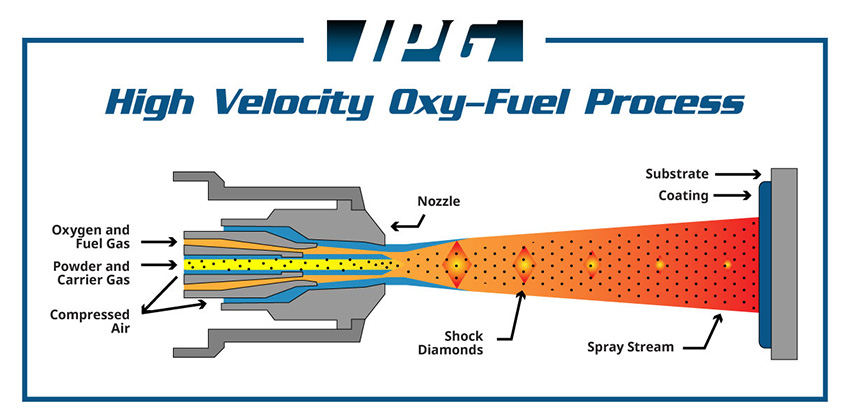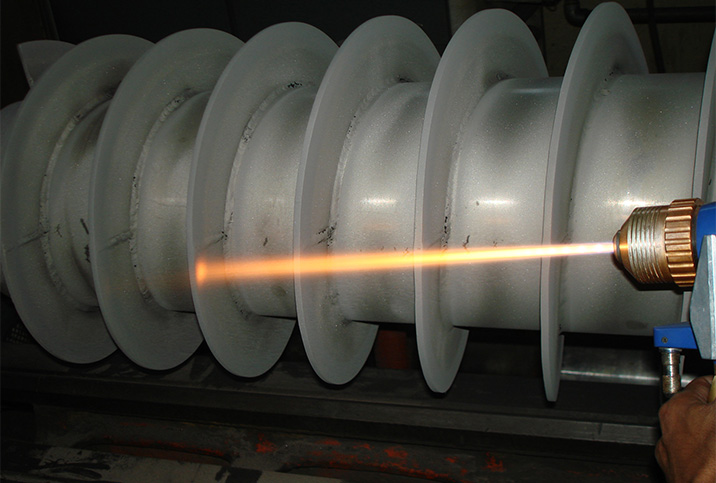
Process Details
- Fuel and oxygen mix
- Combustion generates high heat
- Powder injected into flame
- Molten particles accelerate forward
- Particles impact substrate surface
- Rapid cooling forms coating
- Desired thickness achieved
High Velocity Oxygen Fuel (HVOF) coating Process
HVOF, which stands for High-Velocity Oxygen Fuel, is a thermal spray process employed to apply protective coatings to various surfaces. In this process, a high-speed mixture of fuel gases, such as hydrogen or propane, is combined with oxygen and combusted in a controlled environment. This combustion generates high-velocity, high-temperature flames that propel particles of coating material at supersonic speeds onto the substrate surface. The result is a dense, tightly adherent coating that provides enhanced protection and durability.
- Higher density (lower porosity)
- Higher strength bond to the underlying substrate and improved cohesive strength within the coating
- Lower oxide content
- Better wear resistance
- Higher hardness
- Improved corrosion protection
- Thicker coating
- Anti-fretting
- Anti-galling
- Cermets (e.g. WC/Co, WC/Co/Cr, Cr 3C 2/NiCr, NiCrSiBC)
- Ceramics (e.g. Cr 2O 3, Al 2O 3, ZrO 2)
- Metal alloys (e.g. steels, nickel, chromium and cobalt alloys including NiCrSiB and MCrAlYs)
- Pure metals (e.g. Ni, Cu, Al, Mo, Ti)
- Polymers (e.g. polyester, nylon)
- Composites (e.g. Ni-graphite)



×
❮
![]()
